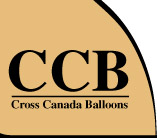|
 . .The Program - Info - Glossary - Trivia - Bios - Criteria
What are balloons made of? Construction of today’s modern hot air balloon envelope is usually rip stop nylon or polyester. This is similar fabric that parachutes and “K-Way” style pull-over jackets are made of. It has a weight of 1.1 oz/yard to 2.5 oz/yard. What kind of fuel do they use? All hot air balloons use propane. In our RE/MAX balloons we carry two 15 gallon, stainless steel fuel tanks. This is enough fuel to fly for about two hours. How do you heat the air? The air is heated with burners. The RE/MAX balloons have a double burner system that outputs over 32 million BTUs (British Thermal Units). The extra burner adds additional safety and performance values. In comparison, an average gas barbecue generates about 40,000 BTUs and the furnace in an average house would generate 60,000 – 80,000 BTUs. What instruments do you carry on board? The three instruments that all balloons are required to carry are: - Pyrometer: This is a temperature sensitive device which tells the pilot the temperature at the top of the envelope. The sensor, which is located inside and at the very top, transmits the information to the instruments in the basket by either hard wire or infra-red light waves. - Altimeter: This informs the pilot of their altitude and the modern day versions are usually calibrated digitally and will display the read out in either feet or meters. - Variometer: This device indicates vertical speed and is usually calibrated as an analogue style instrument. In addition balloons are required when flying close to an airport, to carry an aircraft radio to communicate with the control tower. They also might carry two way radios to communicate with the chase crew on the ground. MODERN HOT AIR BALLOON SYSTEM Today’s hot air balloon systems consist of three major components: envelope, basket, and burner. The most popular envelope size is 57 feet in diameter with a volume of approximately 90,000 cubic feet. It is the AX-8 category. The wicker basket houses the propane fuel tanks and flight instruments. An altimeter, rate of climb meter, and pyrometer are standard instruments in balloon systems. The double burner illustrated here generates 32,000 BTU/hr. (Burner rating is at 128 PSI at an ambient temperature of 80oF)
|
|
